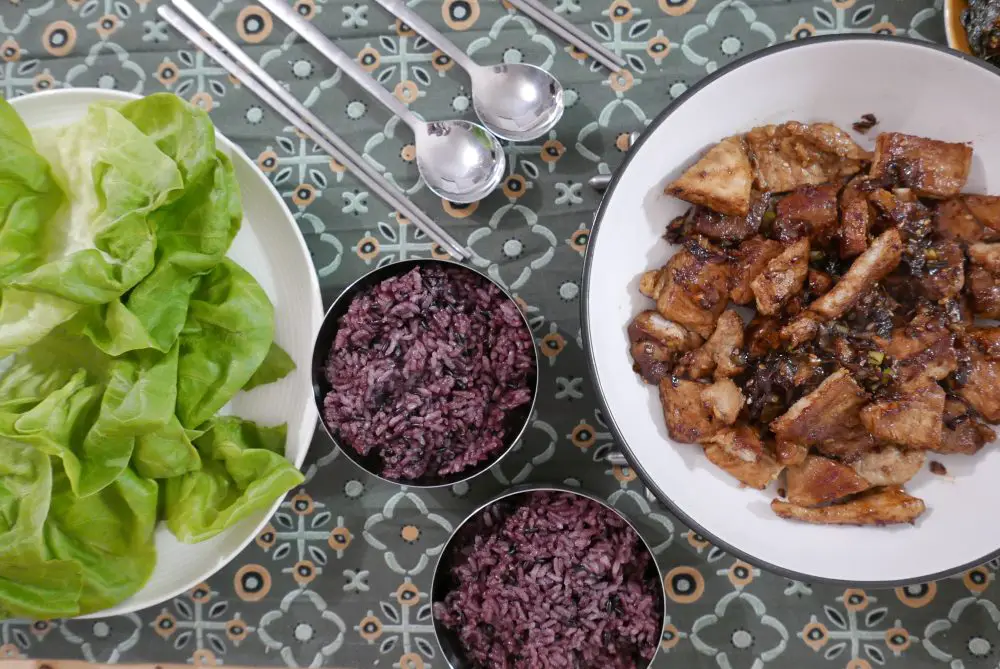
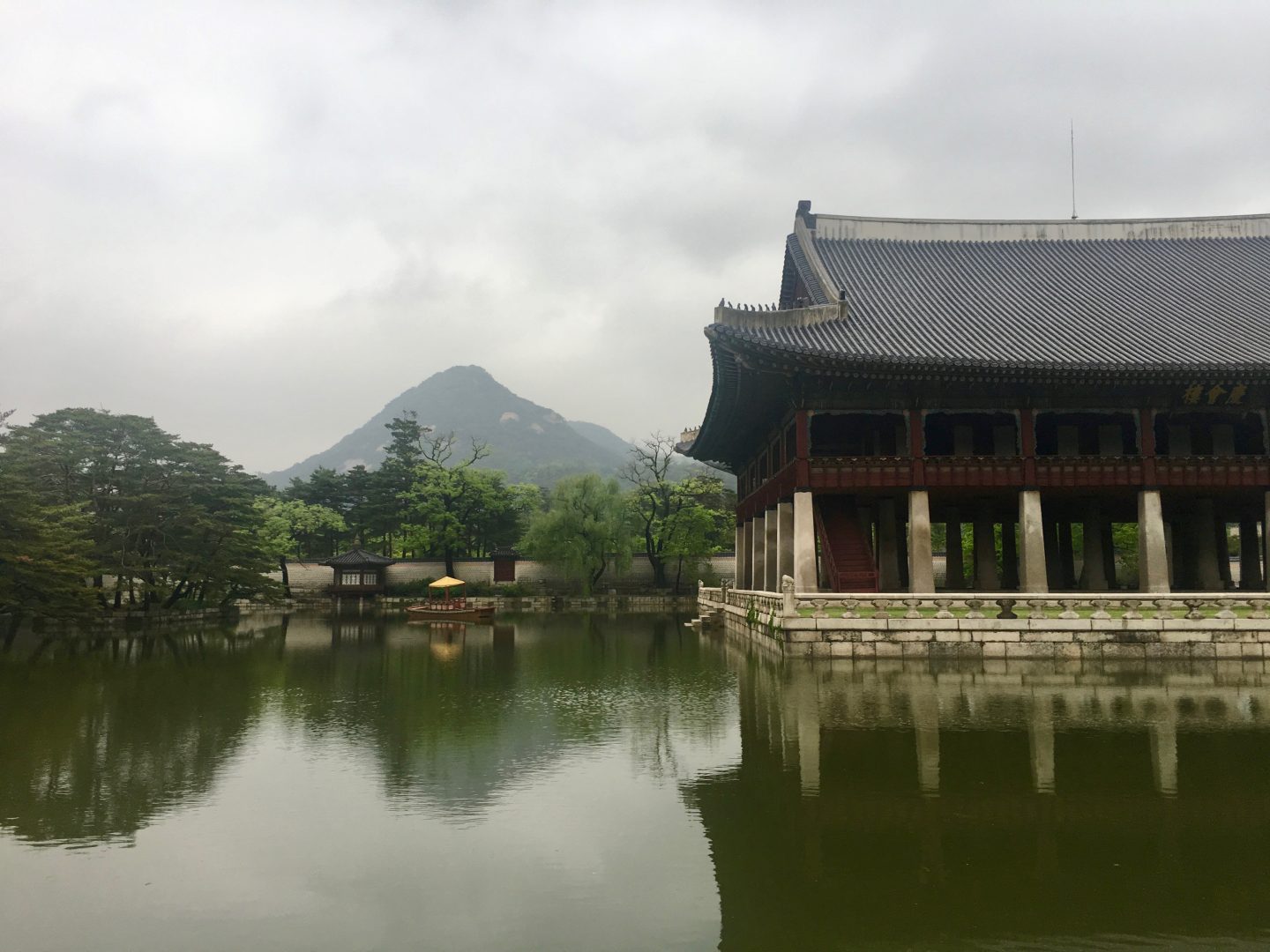
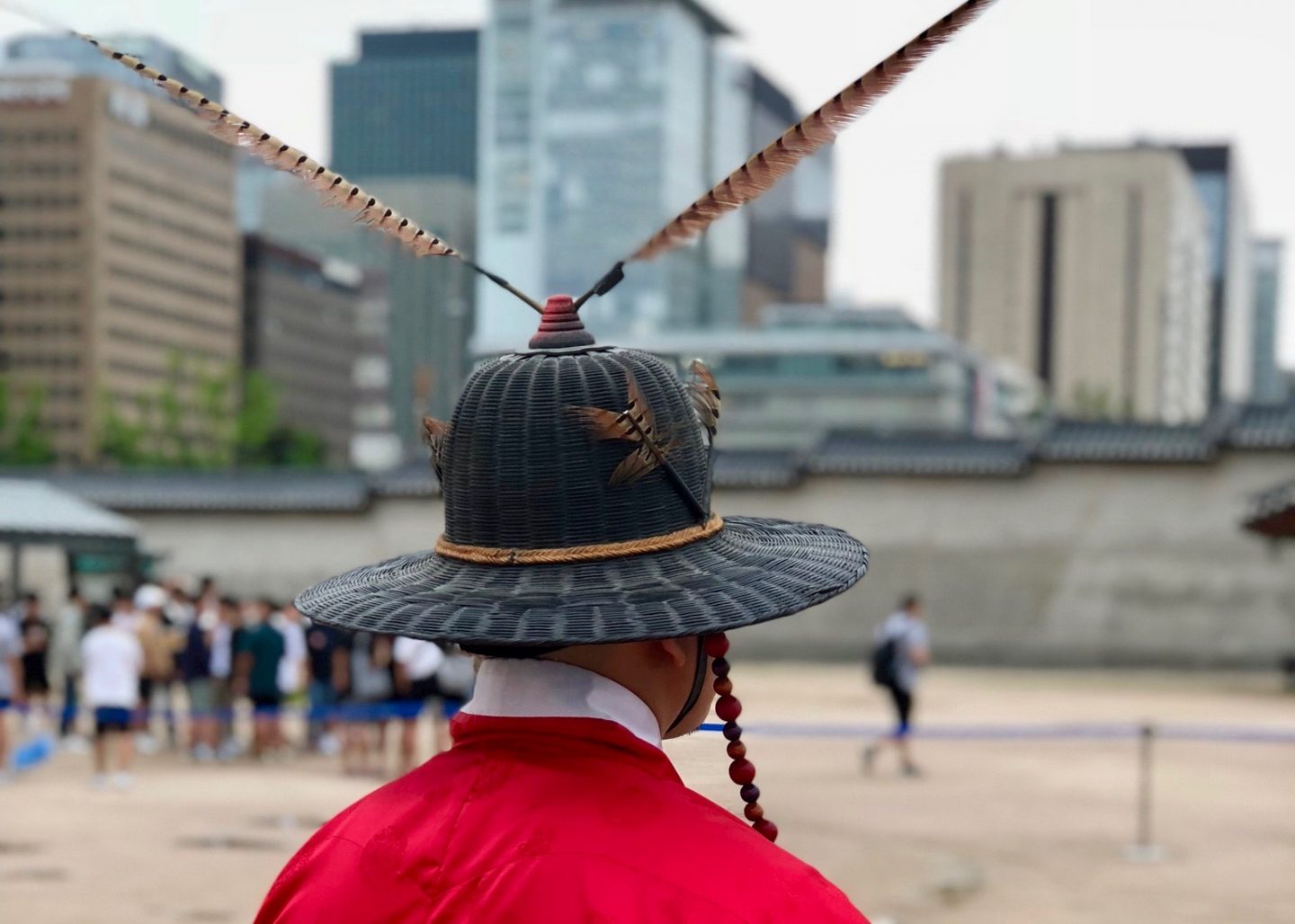
There are a couple of reasons why I was excited to visit Gyeongbokgung. Firstly, I’d recently read The Dragon Queen which is a fantastic book (and part of a trilogy) in which a large chunk is set in the royal palaces of 1860’s Korea. In it, as well as mystery, murder and politics, there are memorable mentions of the food and royal feasts.

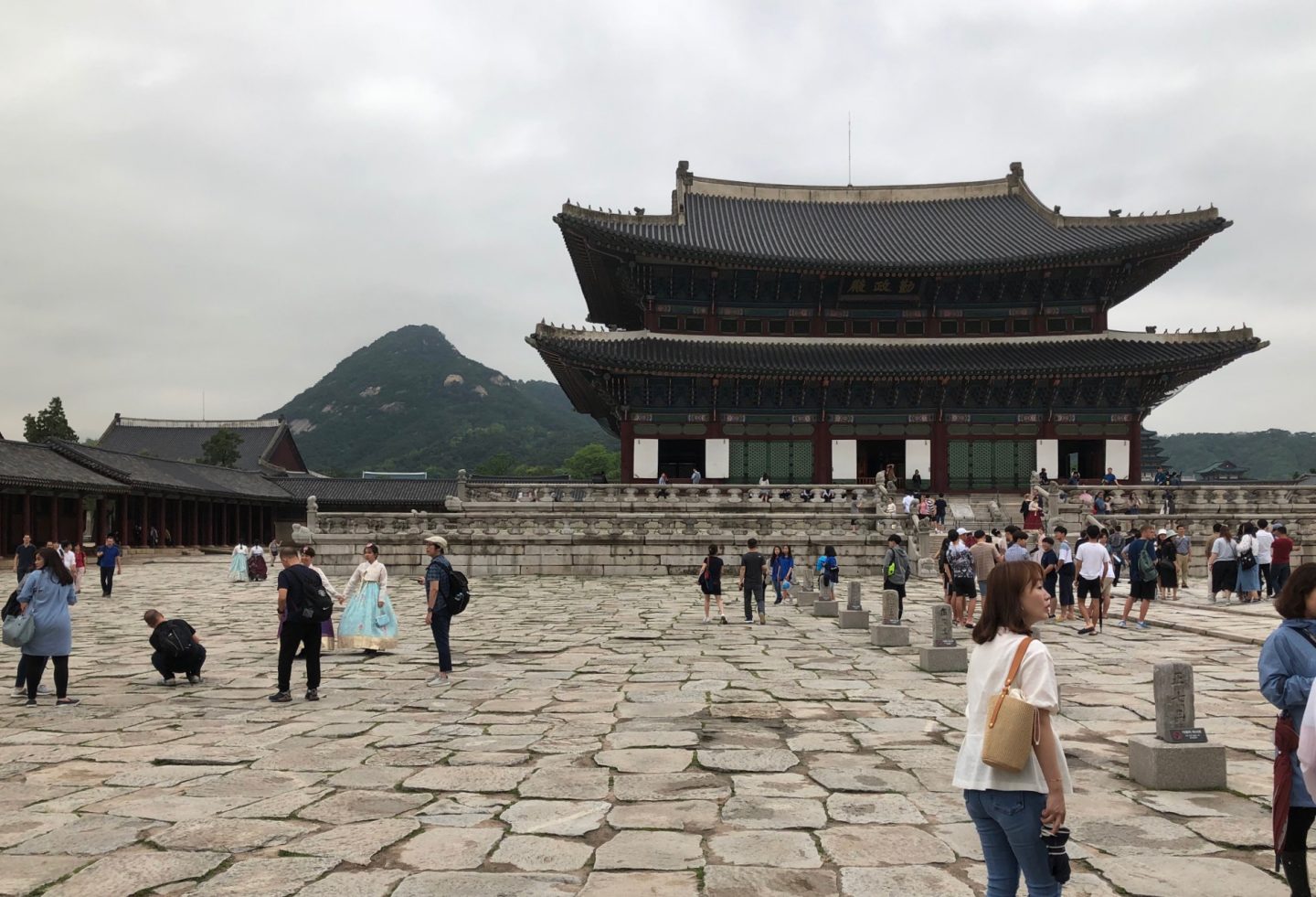
Cut back to 2018 and I was ecstatic to find out that at Gyeongbokgung, some of the royal kitchen buildings (called the Sojubang) had been renovated and were operational! The Sojubang is made up of three areas – Naesojubang for the King’s daily meals, Woesojubang for royal banquets and ancestral rights and Saengmulang where tea, sweets and rice cakes were made. This is where we visited.
The Saengmulgang is now transformed into an elegant tea room. Whats better, you can enjoy a royal afternoon tea there. Which of course, is what we did! Not only was it a nice escape from the drizzle outside, it was a really lovely experience!
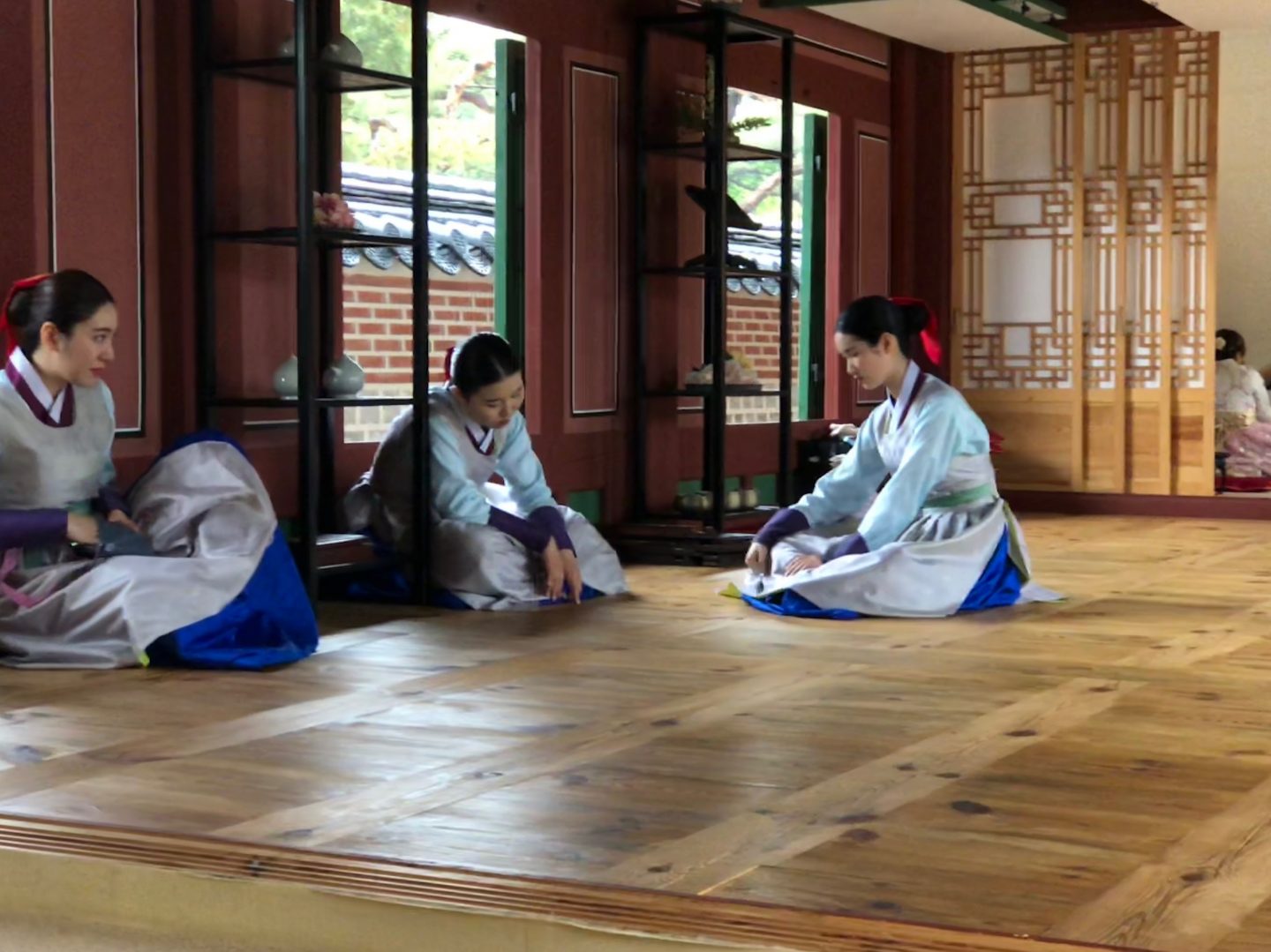
After visiting the palace
A few days later, we were in the amazing Kyobo book shop in Gangnam. I picked up a book called Jewels of the Palace: Royal Recipes from Old Korea. It’s part non-fiction read, part cookbook and I love it. You wont find it here or online although it is written mainly in English. A lot of the recipes are adapted from historical documents whilst others, like this Maekjeok (Royal Korean BBQ Pork) come from stories passed down through the generations:
“Sanggung (higher ranked court lady) Jeong was leading her life freely and quietly, only taking charge of the royal storehouses for the sauces as she was not interested in personal success of power. However, she was promoted to chief court lady in the royal kitchen by the head court lady of the palace. This head court lady had intended to use Jeong as her tool for a certain period with the object of keeping her own family in wealth and power. But, Jeong surprisingly won high praise from the King with her first dish which was maekjeok (grilled sliced pork) as she used deonjang (soybean paste) instead of ganjang (soy sauce) to marinade the pork.”
Maekjoek is similar to the popular dish galbi although rather than the spicy flavours of gochujang, it’s got a more earthly mellow taste thanks to the soy bean marinade. I gave it a try at home and now, you can too with this recipe adapted for ingredients found easily in the UK.

Maekjeok; Royal Korean BBQ Pork (serves four)
Ingredients
- 400g pork neck or collar – If you can’t get this easily, you can use boneless pork chops.
- 6 spring onions finely sliced
- 2 cloves of garlic, crushed
- 1 tbsp grated fresh ginger
- 2 tbsp cooking oil
Pork marinade:
- Soybean paste – 1 tbsp
- Rice wine – 1 tbsp
- Sugar – 1 tsp
- Honey – 1 tbsp
- Sesame oil – 1 tsp
- Sesame seeds – 1 tsp
- Soy sauce – 1 tbsp

Method:
- Slice the pork into large 1cm thick slices (or, if using boneless pork chops as I did, leave as they are)
- In a large bowl, mix the ginger, garlic and onions with all of the marinade ingredients and 1 tbsp of water.
- Add the meat and make sure its coated all over. Leave to marinade for at least 30 minutes.
- Heat the cooking oil on a griddle pan and cook the pork turning frequently until cooked through. Koreans don’t tend to like the blacked charred bits but I love them so tend to leave them on!
Serve this Korean BBQ pork (maekjeok) cut into bite size pieces. Accompany them with traditional galbi garnishes like green chilli, kimchi, thinly sliced garlic and pickled radish plus the usual bowl of rice. Eat by wrapping the meat and chosen accompaniments wrapped in a large green salad leaf. Delicious!



